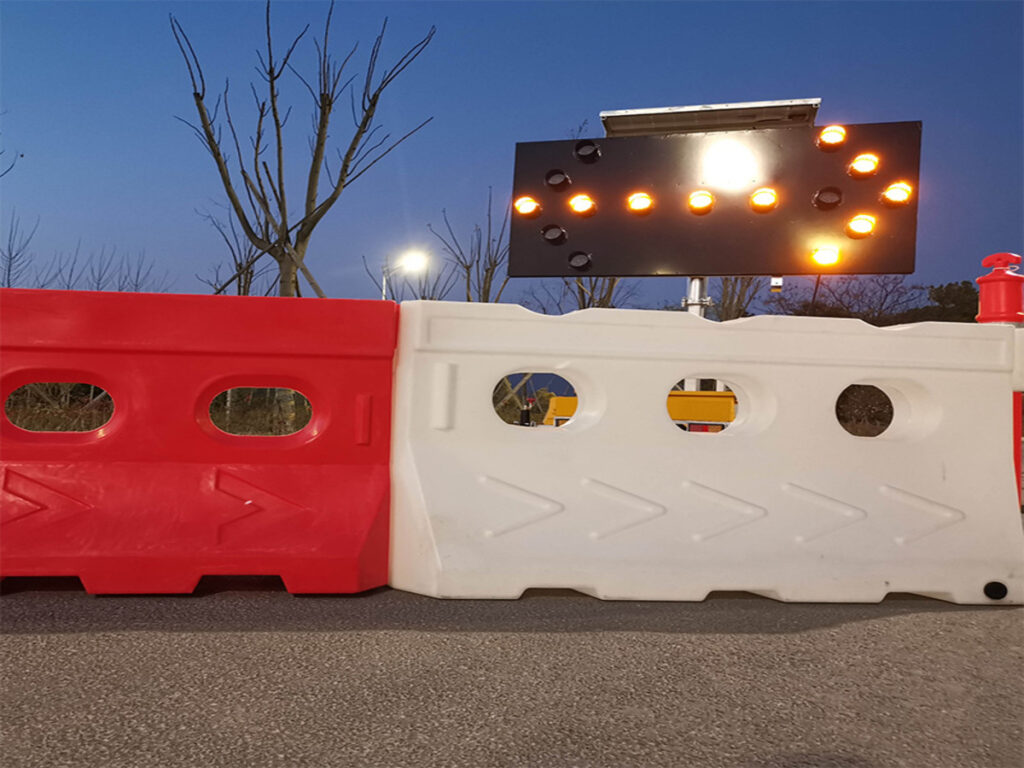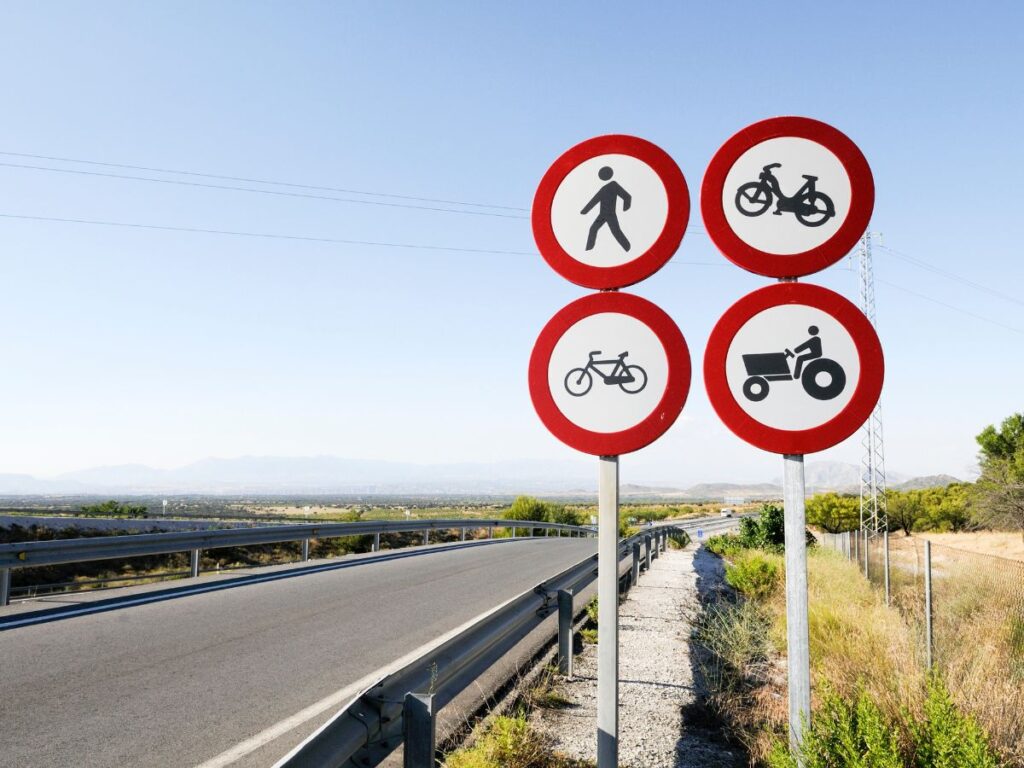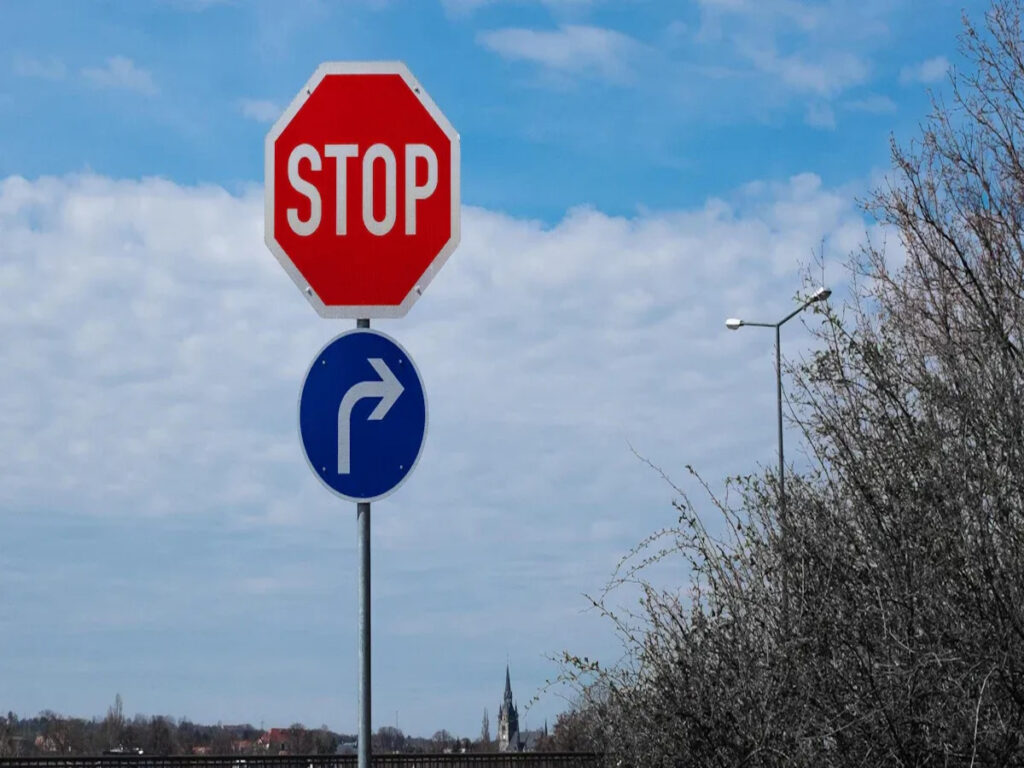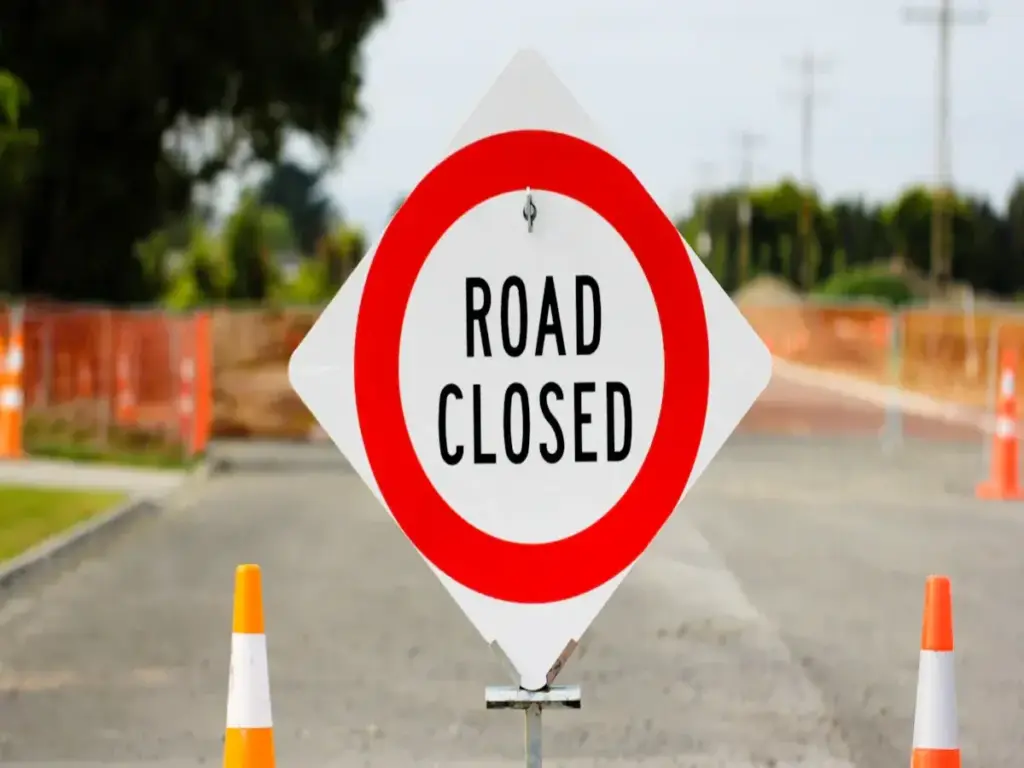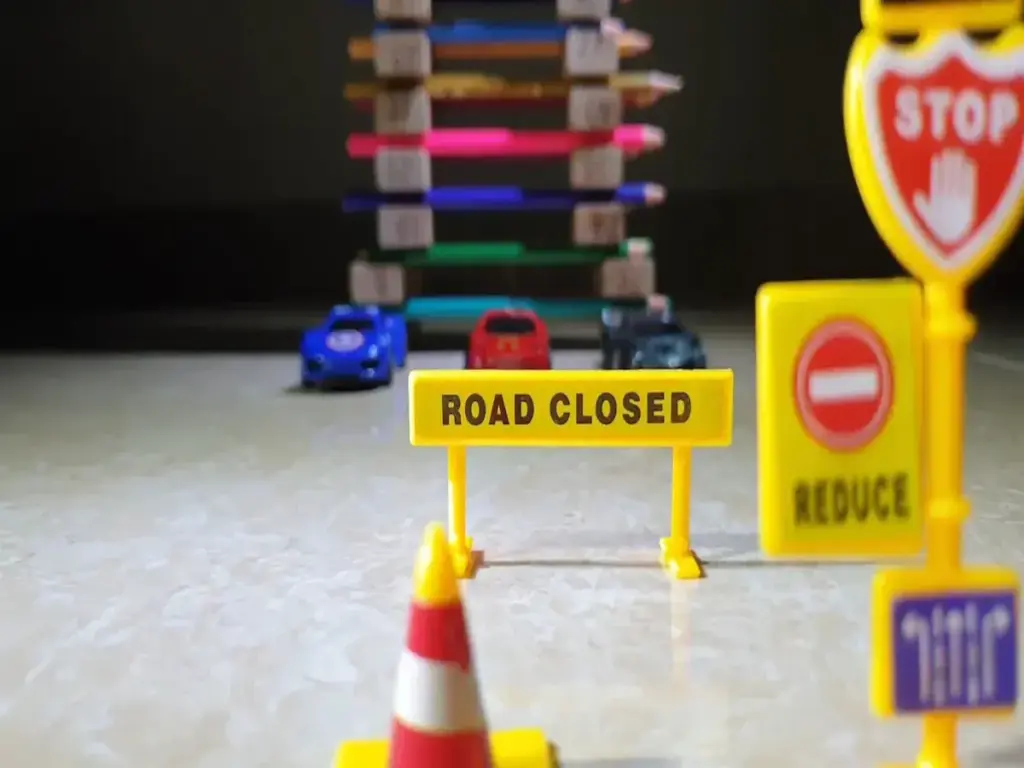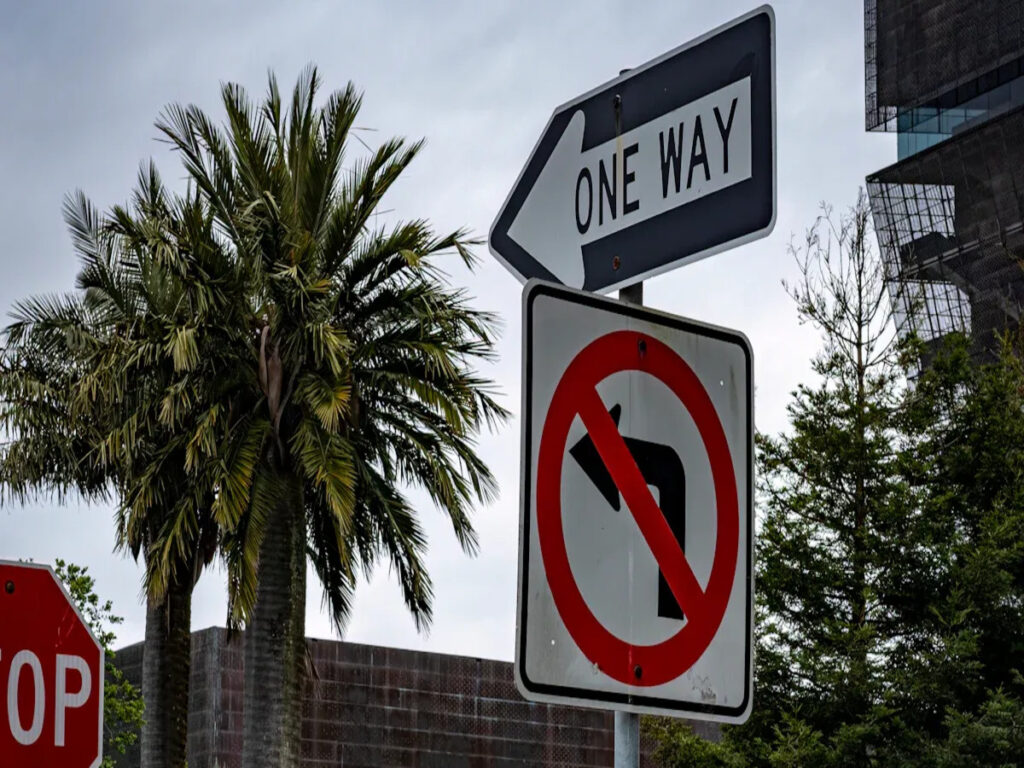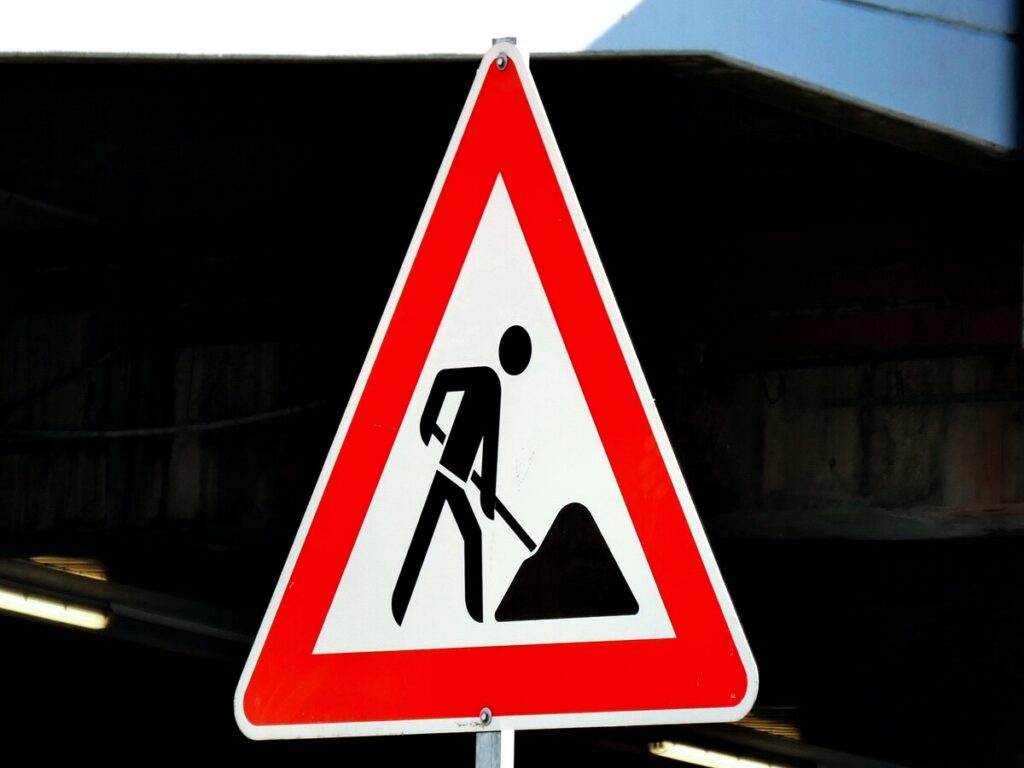
Les panneaux de circulation temporaires sont très importants pour assurer la sécurité des conducteurs et des travailleurs pendant les travaux routiers. Le Royaume-Uni a des règles strictes pour les panneaux de circulation temporaires. Il s'agit notamment des réglementations des panneaux de circulation et des instructions générales. Ces règles aident le ministère des transports à maintenir les normes de sécurité élevées. Les entrepreneurs et les autorités locales doivent toujours suivre les lois sur la sécurité routière et les réglementations de sécurité routière. Les panneaux temporaires doivent respecter des règles de sécurité claires pour s'assurer que les travaux routiers restent en sécurité et fonctionnent bien.
Chez OPTRAFFIC, nous proposons une gamme de panneaux de circulation temporaires that comply with all necessary regulations, ensuring both safety and effectiveness on the job site. Our products are designed to help contractors and authorities maintain the highest safety standards during roadworks. For more insights into the requirements for temporary traffic signs, Consultez notre blog, Comprendre TSRGD 2016 Et ce que cela signifie pour les panneaux de trafic à vendre.
Temporary Traffic Sign Regulations
Règlements sur les panneaux de circulation et instructions générales
The United Kingdom uses the traffic signs regulations and general directions for all road signs. The department for transport made the latest version in 2016. These rules help keep roads safe and up to date. They say how temporary traffic signs should look and where to put them. The rules talk about design, taille, couleur, et réflectivité. Every sign must follow British Standard BS 8442:2015 for materials and retroreflective surfaces. Cela aide les conducteurs à voir les panneaux la nuit ou par mauvais temps.
Local authorities and the police make sure people follow these rules. They use powers from the Loi sur la réglementation routière 1984 et le Traffic Management Act 2004. Local councils can give Penalty Charge Notices if drivers break the rules. The police can also give Fixed Penalty Notices. The department for transport wants everyone to follow these rules to keep road users and workers safe.
Note: The traffic signs manual, en particulier Chapitre 8, gives extra help for temporary street works and roadworks. It explains how to use reflective materials and where to put signs for the best safety.
TSRGD Part 7 Aperçu
Partie 7 of the traffic signs regulations and general directions talks about temporary traffic signs. It explains how to use these signs during roadworks, street maintenance, and temporary street works. The rules say every sign must be easy to see and read. Signs must use standard shapes and colours so drivers know them quickly. The rules also say where to put signs so drivers have time to react before road works.
The traffic signs manual gives more details about where to put traffic signs and how to light them. Par exemple, signs on fast roads must use better reflective materials. Workers must check and clean signs often to keep them clear. The department for transport says signs should only stay up as long as needed. After work ends, workers must take down all temporary signs to stop confusion.
The new roads and street works act also helps. It lets local authorities manage temporary traffic management and make sure all signs follow the latest rules. The act helps the department for transport keep roads safe and working well.
Temporary Traffic Orders
Temporary Traffic Orders (TTOs) are legal papers that let people change normal road use during roadworks or temporary street works. Local councils or highway authorities write a notice with the start and end dates, the area affected, and what restrictions will happen. These restrictions can be road closures, limites de vitesse, or diversions. The process includes asking the public and telling residents, entreprise, et services d'urgence.
The traffic signs manual and the new roads and street works act say every TTO must follow the law. The notice must have a clear traffic management plan. This plan shows where to put temporary traffic signs and how to guide drivers safely. Authorities must look at any complaints and make sure rules are clear. If a company puts up signs without a TTO, it can get fines, troubles juridiques, and project delays.
- Local authorities must:
- Write a formal notice for each TTO.
- Ask the public and emergency services for their views.
- Issue the TTO under Section 14 of UK law.
- Give clear plans for signs and diversions.
- Take down all temporary signs after the work ends.
Conseil: Always check the traffic signs manual and the new roads and street works act before starting any roadworks or temporary street works. This helps you avoid legal trouble and keeps everyone safe.
Design and Placement of Temporary Traffic Signs
Sign Design Standards
Temporary traffic signs in the UK must follow strict rules. The traffic signs manual, mainly Chapter 8, explains what is needed for design. These rules help keep people and workers safe. The manual says signs must look the same and be easy to spot. Workers must use approved signs that follow the Traffic Signs Regulations and General Directions. Training is important too. Workers need special training for temporary traffic management and emergency mobile traffic control.
Key points are:
- Signs should have standard shapes and colours so drivers know them fast.
- Advance warning signs must be put up before any road works start.
- Risk checks help decide if more signs or equipment are needed at risky places.
- The manual gives example plans for different types of roads.
Laws like the Health and Safety at Work Act 1974 and the Disability Discrimination Act 2005 also help guide how signs are made.
Placement et visibilité
Placer les panneaux au bon endroit est très important pour la sécurité. The traffic signs manual gives advice on where to put signs for best results. The size and place of a sign depends on the road type:
| Road Environment | Taille de panneau recommandée (mm) | Key Visibility and Placement Considerations |
|---|---|---|
| Zones urbaines | 450–600 | Use smaller signs, put them high to avoid people or cars, keep the area tidy |
| Routes rurales | 750–900 | Use bigger signs, make sure they can be seen around bends, Utiliser des matériaux réfléchissants |
| Autoroutes | 1200+ | Use the biggest signs, put them at least 2100mm above the kerb, make sure drivers can read them quickly |
Things like lighting and bends in the road change where signs should go. On sharp bends, taller signs help drivers see better. At night or when it is foggy or rainy, reflective or lit-up signs help drivers spot warnings in time. Les panneaux ne doivent pas être bloqués par des arbres, voitures garées, ou d'autres choses.
Matériaux et durabilité
Le material used for temporary traffic signs changes how long they last and how much care they need. Plastic signs are used a lot because they are light and easy to move. But they do not last long in bad weather and need to be replaced more often. Composite materials last longer and do not get damaged by weather easily, so they are good for longer jobs. Aluminium signs last a very long time and do not need much care, but they are heavy and cost more, so they are better for long jobs, not short ones.
| Matériel | Durabilité & Durée de vie | Besoins de maintenance | Aptitude à une utilisation temporaire |
|---|---|---|---|
| Plastique | Moyen (à propos 5 années) | Facile à nettoyer, replace often | Best for short-term, facile à manipuler |
| Composite | Haut, résistant aux intempéries | Little upkeep needed | Good for longer temporary projects |
| Aluminium | Très haut (10+ années) | À faible entretien | Better for long-term, less for temporary |
| Acier | Très haut, needs coating | Frequent rust checks | Not preferred for temporary |
| Bois | Faible, not weather resistant | High maintenance | Not recommended |
Picking the right material helps keep everyone safe and saves money during roadworks.
Chapitre 8 Gestion du trafic
Health and Safety Requirements
Chapitre 8 traffic management has clear safety rules for temporary traffic signs. The manual gives rules for signing, éclairage, and guarding. Workers must finish training like the NRSWA Signing, Lighting and Guarding course or Lantra 12d. This helps them know what to do. Risk checks help find the safest way to set up each site. Designers must think about people walking, vélo, and driving. They must keep paths open for everyone, even disabled people. High-visibility barriers keep people safe from dangers. Workers use ramps and boards to keep walkways open. Blind and partially sighted people need barriers with solid edges, not just tape.
Installation et maintenance
Chapitre 8 traffic management explains how to put up and look after temporary traffic signs. Teams must plan where to put signs and cones to keep everyone safe. Sur les routes rapides, workers use road closures or special ways like Mobile Carriageway Closure. Vehicles used for putting up signs must be very safe. They need seat belts, head rests, and reflective markings. Bright barriers and amber lights help drivers see work areas. Signs on the road must be on vehicles and watched all the time.
Signs on the side of the road can stay in one place. Maintenance teams must check signs often and fix or swap broken ones quickly. Chapitre 8 rules say all equipment must be easy to reach and not block the way. Workers must plan for bad weather and other dangers. Lifting heavy signs can be risky, so this must be managed.
Liste de contrôle de conformité
Contractors must follow chapter 8 traffic management and all rules at every step. Here is a simple checklist:
- Do a risk check for each site.
- Use only approved temporary traffic signs and bright barriers.
- Keep walking and cycling paths open and safe.
- Put signs where drivers and people can see them well.
- Check all signs and barriers every day for damage or movement.
- Use vehicles that meet chapter 8 rules for putting up and looking after signs.
- Plan for bad weather and other dangers.
- Take away all temporary signs and barriers when work is done.
Common mistakes are putting signs in the wrong place, blocking other signs, or using broken equipment. Not following local rules or not getting permits can lead to fines and delays. Checking often and planning well helps stop these problems.
Compliance and Enforcement
Roles and Responsibilities
Many groups work together to make sure rules are followed. Contractors look at the site and make a Traffic Control Plan. They decide where signs should go and check the plan follows road safety laws. Contractors also look after the signs while work is happening. Local authorities check and approve these plans. They visit sites and can stop work if they find problems. Local authorities care about public safety and help fix any issues. Traffic management companies give expert advice, check plans, and offer training. They make sure all plans and signs follow the latest road safety rules. These companies also teach workers how to follow the rules.
| Partie prenante | Roles and Responsibilities |
|---|---|
| Entrepreneurs | Check sites, make and look after Traffic Control Plans, suivre les règles, and talk with everyone involved. |
| Autorités locales | Approve plans, check sites, give penalties, Et assurez-vous que les gens. |
| Traffic Management Companies | Give expert help, check plans, train workers, and help everyone follow the law. |
Pénalités en cas de non-conformité
Ne pas suivre les règles peut causer de gros problèmes. Authorities can give large fines if rules are broken, like using wrong signs or not keeping them safe. If accidents happen because of bad signs, there can be legal trouble. Companies can lose trust and face delays if they do not follow the new roads and street works act. The table below shows some common penalties:
| Type de pénalité | Description |
|---|---|
| Financial Penalties | Big fines for breaking rules, like using unsafe signs or not following speed limits. |
| Legal Liabilities | Lawsuits and costs if accidents happen because rules were not followed. |
| Dommage à la réputation | People may not trust the company and its name can be harmed. |
| Operational Disruptions | Delays and extra costs if unsafe signs are removed or work is stopped. |
| Frais de conformité | It is cheaper to follow the rules than to pay fines or legal fees. |
Note: Following road safety rules helps avoid these problems and keeps everyone safe.
Updates to Regulations
Rules for temporary traffic signs change often. New things like smart signs and solar-powered lights bring updates. Safety worries, like making signs easier to see, also change the rules. The government checks the rules to keep up with new ideas and make roads safer. Environmental needs and better ways to manage traffic mean rules must stay up to date. The new roads and street works act and other laws help make sure rules fit what is needed now. Everyone must check for updates and follow the newest rules to keep roads safe and legal.
Common Challenges and Solutions
Visibility and Weather
It is hard to see signs during roadworks in fog, pluie, ou la nuit. Drivers might not spot temporary signs, ce qui peut provoquer des crashs. Chapitre 8 traffic management gives ways to make things safer:
- Use signs that light up so drivers see them at night.
- Mettre matériaux réfléchissants on signs so they are easier to read in bad weather.
- Change where signs and lights go to help drivers on dark roads.
- Pick strong materials like metals that do not rust and plastics that do not fade in the sun, Les signes durent donc plus longtemps.
- Add reflective barriers and warning signs to help drivers see better at night or in bad weather.
Studies show new car technology helps, but it does not fix all problems. Making signs better is still very important for safety during roadworks.
Sign Overload and Traffic Volume
Busy roadworks can have too many signs for drivers. Too many signs make it hard for drivers to understand what to do. This can distract drivers and cause crashes. Chapitre 8 traffic management says messages must be clear and simple:
- Use fewer words and only say what is most important.
- Use bright colours and LED lights so signs stand out.
- Put signs further away from turns or exits on fast roads so drivers have more time.
- Check if signs are easy to understand by asking drivers and using tests.
A motorway project showed that short messages and digital signs helped lower crashes and made traffic flow better. Signs that can change and digital updates help keep information clear when roadworks change.
Keeping Up with Regulation Changes
Contractors find it hard to keep up with new rules. Chapitre 8 traffic management and other rules change often to make roads safer. Tools like digital signs and new electronic road signs give updates quickly and can be changed easily. Meetings and computer programs like KeySIGN and KeyPOST help contractors make signs that follow the rules and learn about new changes. The best way is to train often, check if rules are being followed, and keep good records to make sure everyone follows the latest rules.
Conseil: Plan early, train often, and use digital tools to help teams follow the rules and keep everyone safe during roadworks.
When people follow the rules for temporary traffic signs, it keeps everyone safe. Contractors and local authorities need to check what they do often. Training helps workers learn new things and stay ready. Reading official guides like TSRGD and Chapter 8 gives good advice. Teams that plan early and look over their work make sure every sign is up to date.
FAQ
What is the main law for temporary traffic signs in the UK?
Les réglementations des signes de la circulation et des instructions générales (Tsrgd) 2016 sets the main rules. This law explains how to design, lieu, and use temporary traffic signs during roadworks.
Who checks if temporary signs follow the rules?
Local authorities and the police check roadworks sites. They make sure all signs meet safety standards. They can give fines if contractors do not follow the rules.
How long can temporary traffic signs stay up?
Temporary signs should only stay up while work happens. Workers must remove all signs as soon as the road returns to normal. Leaving signs up too long can confuse drivers.
What materials work best for temporary traffic signs?
Plastic and composite signs work well for short jobs. Aluminium signs last longer and suit bigger projects. The right material depends on the job length and weather conditions.
Why is sign visibility important during roadworks?
Clear signs help drivers see changes on the road. Good visibility prevents accidents and keeps everyone safe. Reflective materials and lighting help signs stand out, surtout la nuit ou par mauvais temps.

